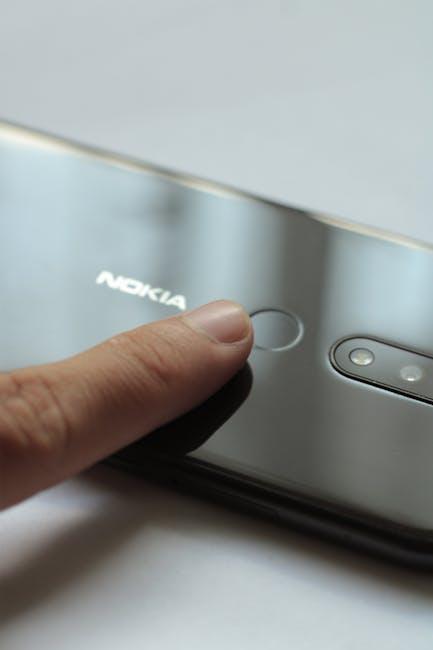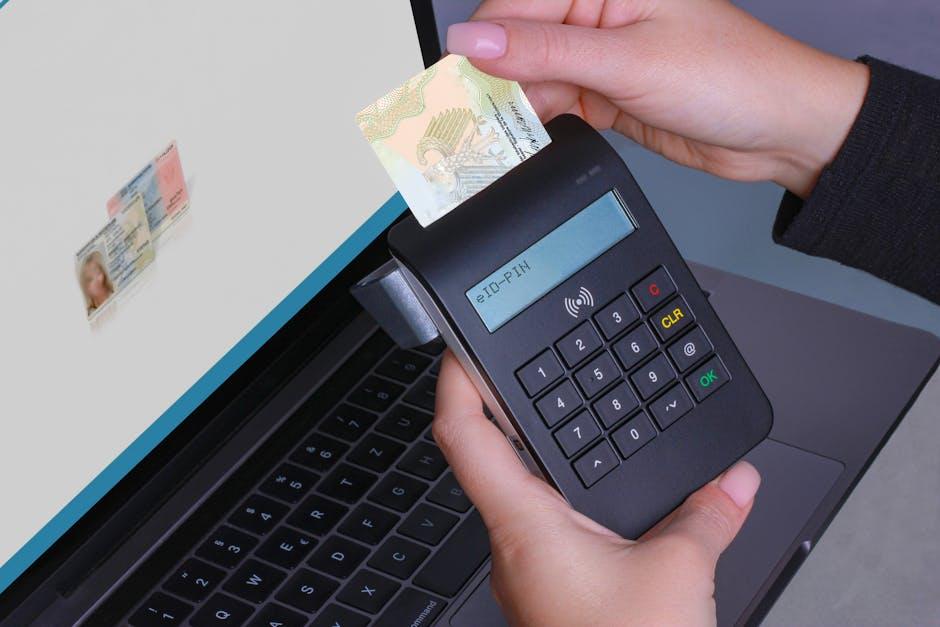In an age where our smartphones serve as gateways to personal, financial, and professional realms, the need for robust security measures has never been more crucial. Biometric phone security, once the stuff of futuristic dreams, has swiftly evolved from simple fingerprint sensors to sophisticated facial recognition and beyond. This journey reflects not only technological innovation but also a shifting understanding of privacy, convenience, and trust. As we unlock the story behind these advancements, we uncover how biometrics have transformed our relationship with our devices-making security more personal, seamless, and, intriguingly, more human.
The Rise of Fingerprint Sensors Unlocking Convenience and Security

Fingerprint sensors have revolutionized how users interact with their smartphones, cleverly blending ease of access with robust security protocols. This technology leverages unique ridges and minutiae of individual fingerprints, creating a biometric key that is both personal and virtually impossible to replicate. As the sensor hardware has become more refined, it now offers instantaneous unlocking, enabling a seamless user experience without compromising safety. Notably, modern fingerprint readers are integrated beneath displays or hidden on power buttons, ensuring devices retain sleekness without sacrificing functionality.
Beyond mere unlocking, fingerprint sensors have paved the way for a multitude of applications enhancing digital security and convenience. Users can authorize mobile payments, approve app permissions, and protect sensitive data with just a touch. Key advantages include:
- Speed: Authentication occurs within milliseconds.
- Accuracy: High precision reduces false rejections and prevents unauthorized access.
- Durability: Sensor performance remains consistent despite daily wear and tear.
| Feature | Benefit |
|---|---|
| Under-screen Sensors | Maintains sleek device design |
| Multifinger Capability | Increases user flexibility |
| Encrypted Storage | Enhances data security |
Face Recognition Technology Balancing Speed and Privacy Concerns

As facial recognition technology continues to redefine phone security, the challenge lies in optimizing its responsiveness without compromising user privacy. Modern devices harness powerful AI algorithms that scan and verify facial features within milliseconds, facilitating a seamless unlock experience. However, this rapid processing often raises concerns about data storage, potential breaches, and unauthorized tracking. To address these issues, manufacturers have adopted stringent encryption methods, ensuring facial data remains securely stored locally on devices, rather than in remote servers.
Balancing speed and privacy requires a multifaceted approach, combining innovative hardware with transparent data policies. Users benefit from enhanced convenience through features such as adaptive learning, which refines recognition over time, and anti-spoofing techniques that detect attempts using photos or masks. Below is a summary of key aspects influencing this balance:
- On-device processing: Enables faster recognition while keeping data private.
- Data encryption: Protects biometric templates from hackers.
- User control: Allows opting out or limiting data use for enhanced privacy.
- Regulatory compliance: Meets global standards to guard user rights and security.
| Feature | Speed Impact | Privacy Benefit |
|---|---|---|
| Edge AI Computing | Fast | Local Data Storage |
| 3D Facial Mapping | Moderate | Anti-Spoofing |
| Encrypted Templates | Negligible | Data Protection |
The Integration of Behavioral Biometrics Enhancing User Authentication

Behavioral biometrics have carved out a compelling niche in the realm of mobile security by moving beyond traditional physical identifiers. This technology leverages unique patterns such as keystroke dynamics, swipe gestures, and even the rhythm of how a user holds their device, adding an invisible layer of protection that continuously verifies identity in real time. Unlike static methods, these dynamic traits evolve with usage, making unauthorized access exponentially harder. The continual authentication process ensures that even if a phone falls into the wrong hands, mismatched behavioral cues trigger alerts or lockouts, subtly protecting sensitive data without disrupting the user experience.
In practical application, behavioral biometrics excel by complementing existing technologies such as fingerprint and facial recognition, elevating security to multi-factor authentication built directly into everyday interactions. Consider the following core advantages:
- Passive verification that requires no active input from the user after initial setup.
- Adaptive learning, constantly refining accuracy based on user behavior changes.
- Fraud prevention by detecting anomalies in interaction patterns instantly.
| Feature | Benefit |
|---|---|
| Typing rhythm | Enhances password strength analysis |
| Swipe pattern | Detects unauthorized screen navigation |
| Device holding angle | Identifies genuine user posture |
Future Trends in Biometric Security Recommendations for Safe Adoption

As biometric technology advances, we’re witnessing a shift toward multi-modal authentication methods that combine fingerprint scanning, facial recognition, and even voice patterns to enhance security. This fusion reduces false acceptance rates and mitigates risks inherent in relying on a single biometric trait. To safely embrace these innovations, it is essential to ensure robust data encryption and local processing of biometric data, minimizing exposure to cyberattacks and protecting user privacy.
For organizations and users aiming to adopt future biometric solutions, consider the following best practices:
- Prioritize Transparency: Clearly communicate how biometric data is collected, stored, and used.
- Implement Multi-Factor Authentication: Combine biometrics with PINs or tokens for layered security.
- Regularly Update Systems: Ensure software is patched to defend against emerging threats.
- Adopt Privacy by Design: Integrate privacy protections at every development stage.
| Trend | Benefit | Recommendation |
|---|---|---|
| Behavior Biometrics | Continuous authentication | Focus on unobtrusive data capture |
| Decentralized Storage | Enhanced data control | Utilize edge computing |
| AI Integration | Improved threat detection | Train models on diverse datasets |
Closing Remarks
As technology continues to shape our daily lives, the story of biometric phone security remains an evolving narrative-one that balances innovation with the ever-present need for privacy and trust. From simple fingerprint scans to the intricate mapping of facial features and beyond, our devices grow smarter, more intuitive, and increasingly personal guardians of our digital world. While the path forward is paved with both exciting possibilities and complex challenges, one thing is certain: biometric security isn’t just a chapter in the history of mobile technology-it’s the key that will unlock the future of how we connect, protect, and identify ourselves in an increasingly digital age.











